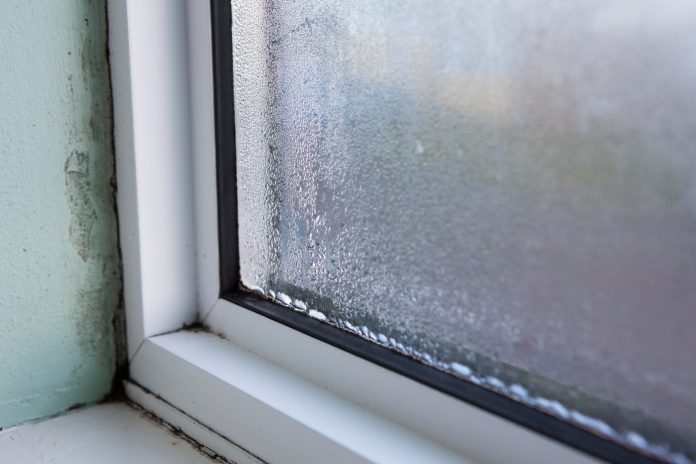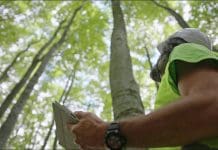The Property Care Association is advising people to consider making changes in spring and summer to their properties as many adapt to remote working for the long-term. James Berry, PCA technical manager, explains why
Dubbed “the worst flats in Britain”, TV cameras at a council block in Croydon focused the spotlight on the appalling and dangerous living conditions caused by damp.
Walls, furniture and clothing covered in mould, floors soaked and ceilings dripping with condensation, the block in Regina Road, South Norwood, was bought to the nation’s attention in a recent broadcast by ITV.
The programme showed the stark reality of living in such conditions.
While this is an extreme case, the issue affects housing stock across the UK at a time when more people are seeing their properties in a different light.
Working from home has changed perspectives and the trend is likely to become a more common one in the future, even as restrictions ease.
With this in mind, the PCA is urging the public to act now to avoid future problems with condensation.
People who have found themselves working or spending longer at home and have experienced, mould, damp and condensation problems this winter could see the same issues emerge again later this year.
Common causes
Water from the air that forms as condensation is the most common form of unwanted dampness experienced by householders.
It can cause water to run down walls and windows, as well as encouraging mould growth.
One of the most common tell-tale signs of a condensation issue is mould growth, which can damage the décor of a home and, for some people, can increase the risk of asthma and respiratory illnesses when spores are released into the air.
Poor heating, cold walls and inadequate ventilation are at the root to mould and damp.
The water comes from cooking, washing and the other everyday activities of normal life.
Unfortunately, in situations where homes are overcrowded, vents don’t work properly and people face a daily choice between heating and eating, living conditions can deteriorate quickly.
The way forward
We believe a more robust strategy is vital to ensure effective ventilation methods are introduced in homes.
This focus on more effective ventilation is the single most important element needed to help tackle the problem of atmospheric moisture in buildings.
However, despite the impact it can have on a property’s moisture levels, the current regulation and guidance setting out minimum ventilation requirements in homes is mixed and often ignored or misunderstood.
While we continue to lobby at on that, the PCA has taken a number of steps to tackle issues.
One of the most significant is a collaboration between the PCA and the University College London Institute for Environmental Design & Engineering (UCL IEDE), which has recently resulted in major industry development.
The UK-wide research project led to a further collaboration with UCL’s Department of Electronic & Electrical Engineering to develop a computer program diagnostic tool.
This Building Moisture Index (BMI) Reporting Technology analyses conditions within a building in order to understand precisely why it is out of balance in terms of its moisture levels, and then prescribes the correct solutions to address the issue.
The technology puts complex building physics and associated diagnostics and reports into the hands of professionals, enabling the precise causes of condensation and mould to enable the moisture imbalance within a home or building to be rectified.
Act now
This initiative and others are advancing forwards, but our immediate advice to householders is not to put off tackling a condensation issue and use the time now as we enter spring and summer to take action and avoid problems later in the year.
As working patterns change and more time is spent at home, creating a healthy, warm and welcoming environment is more important than ever.
There are some basic steps that can be taken to reduce the moisture created by everyday activities. However, where condensation is a real problem and it persists, a specialist surveyor should be engaged to explore the causes and help find a solution.
The PCA offers a free online guide, which outlines the issues that can arise from condensation and offers advice on how to combat it.
Available at www.property-care.org/homeowners/condensation/, it includes information on how condensation forms and advice on steps to reduce its impact.
The message to building professionals
As well as appealing to the public to be aware of the issue, we’d also advise building professionals to be alert to the matter too, and to seek further advice if they feel the issue is a pressing one.
One of the most effective ways to tackle condensation is through the installation of an effective ventilation system, but consideration does need to be given to other factors to ensure homes are in good shape for the future.
Consideration needs to be made on an individual case by case basis to get the right outcome.
In these situations, a member of the PCA can ensure all the factors which can affect moisture levels, such as the building construction, style of occupation, heating, thermal performance of walls and floors and the provision of air exchange, can be considered and the best solution proposed.
The PCA has a specialist area of membership, the Residential Ventilation Group, which can signpost building professionals to specialists in this area.
More details can be found at www.property-care.org/homeowners/domestic-air-quality-and-ventilation/
 James Berry
James Berry
Technical manager
+44 (0)1480 400 000
Twitter: @PCAPropertyCare
LinkedIn: Property Care Association

















